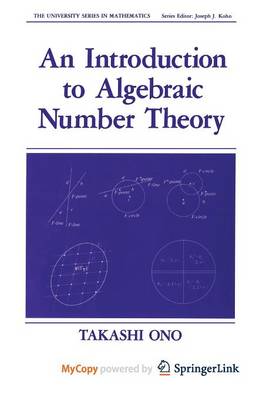University Series in Mathematics
2 total works
This book is a translation of my book Suron Josetsu (An Introduction to Number Theory), Second Edition, published by Shokabo, Tokyo, in 1988. The translation is faithful to the original globally but, taking advantage of my being the translator of my own book, I felt completely free to reform or deform the original locally everywhere. When I sent T. Tamagawa a copy of the First Edition of the original work two years ago, he immediately pointed out that I had skipped the discussion of the class numbers of real quadratic fields in terms of continued fractions and (in a letter dated 2/15/87) sketched his idea of treating continued fractions without writing explicitly continued fractions, an approach he had first presented in his number theory lectures at Yale some years ago. Although I did not follow his approach exactly, I added to this translation a section (Section 4. 9), which nevertheless fills the gap pointed out by Tamagawa. With this addition, the present book covers at least T. Takagi's Shoto Seisuron Kogi (Lectures on Elementary Number Theory), First Edition (Kyoritsu, 1931), which, in turn, covered at least Dirichlet's Vorlesungen. It is customary to assume basic concepts of algebra (up to, say, Galois theory) in writing a textbook of algebraic number theory. But I feel a little strange if I assume Galois theory and prove Gauss quadratic reciprocity.
The first six chapters and Appendix 1 of this book appeared in Japanese in a book of the same title 15years aga (Jikkyo, Tokyo, 1980).At the request of some people who do not wish to learn Japanese, I decided to rewrite my old work in English. This time, I added a chapter on the arithmetic of quadratic maps (Chapter 7) and Appendix 2, A Short Survey of Subsequent Research on Congruent Numbers, by M. Kida. Some 20 years ago, while rifling through the pages of Selecta Heinz Hopj (Springer, 1964), I noticed a system of three quadratic forms in four variables with coefficientsin Z that yields the map of the 3-sphere to the 2-sphere with the Hopf invariant r =1 (cf. Selecta, p. 52). Immediately I feit that one aspect of classical and modern number theory, including quadratic forms (Pythagoras, Fermat, Euler, and Gauss) and space elliptic curves as intersection of quadratic surfaces (Fibonacci, Fermat, and Euler), could be considered as the number theory of quadratic maps-especially of those maps sending the n-sphere to the m-sphere, i.e., the generalized Hopf maps. Having these in mind, I deliveredseverallectures at The Johns Hopkins University (Topics in Number Theory, 1973-1974, 1975-1976, 1978-1979, and 1979-1980). These lectures necessarily contained the following three basic areas of mathematics: v vi Preface Theta Simple Functions Aigebras Elliptic Curves Number Theory Figure P.l.

